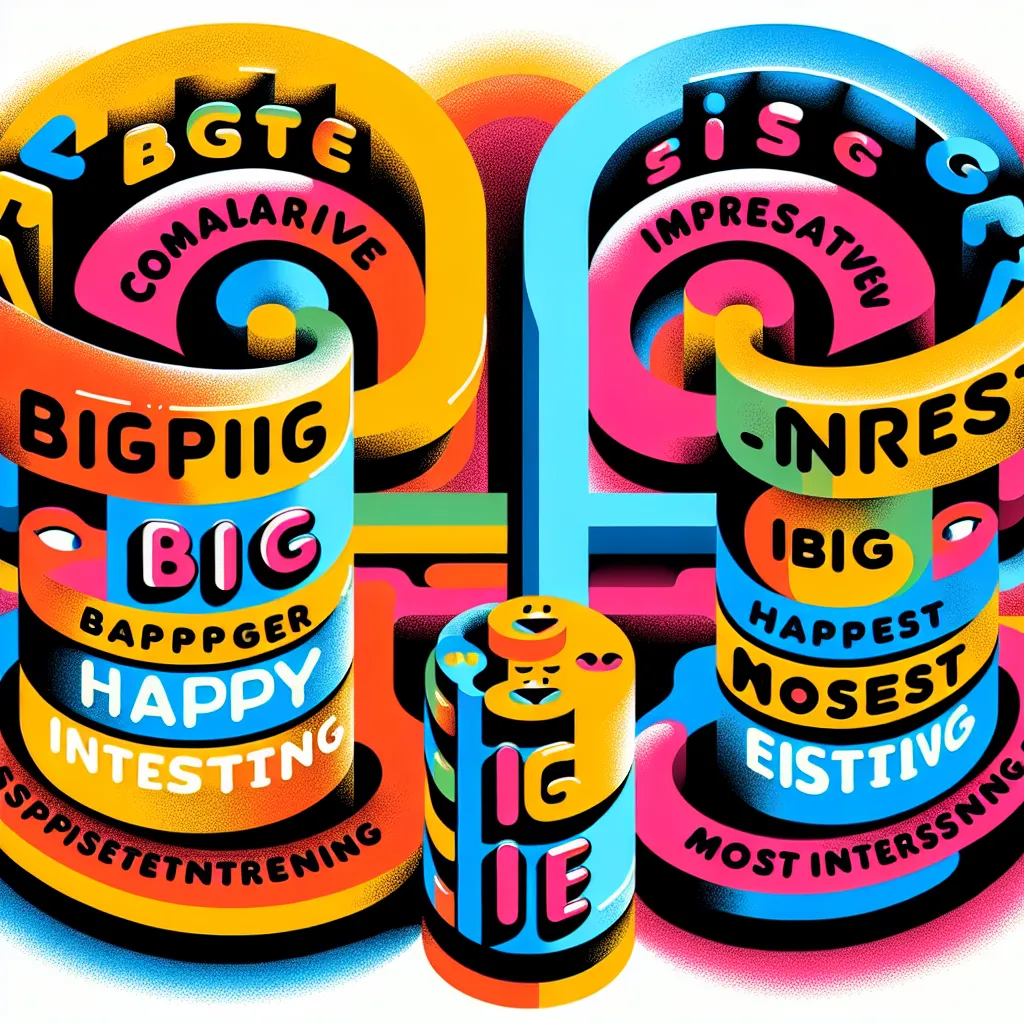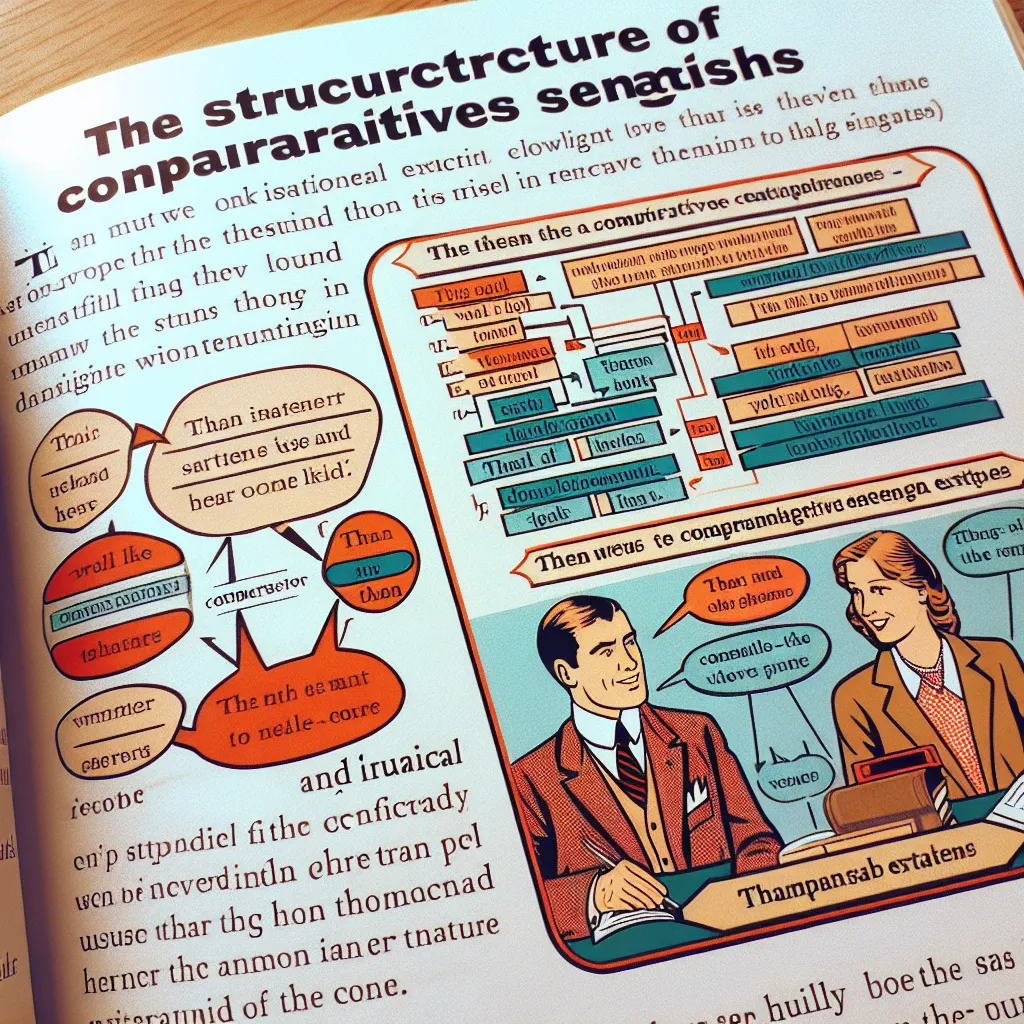Are you struggling to use comparative and superlative forms correctly in English? You’re not alone! Many English learners find these structures challenging, but with the right approach, you can master them quickly and confidently. In this comprehensive guide, we’ll explore ten invaluable tips to help you excel in using comparative and superlative forms, enhancing your overall English proficiency.
 English comparative and superlative forms
English comparative and superlative forms
Understanding the Basics of Comparative and Superlative Forms
Before diving into our tips, let’s briefly review what comparative and superlative forms are and why they’re crucial in English communication.
Comparative forms are used to compare two things, people, or situations. For example:
- “She is taller than her sister.”
- “This book is more interesting than that one.”
Superlative forms are used to compare three or more things, identifying the extreme quality. For instance:
- “He is the tallest boy in the class.”
- “This is the most interesting book I’ve ever read.”
Mastering these forms allows you to express degrees of comparison effectively, a skill essential for both everyday conversations and academic writing.
Tip 1: Learn the Rules for Regular Adjectives
One-Syllable Adjectives
For most one-syllable adjectives, simply add ‘-er’ for the comparative and ‘-est’ for the superlative:
- Tall → Taller → Tallest
- Smart → Smarter → Smartest
Two-Syllable Adjectives
For two-syllable adjectives ending in ‘-y’, change the ‘y’ to ‘i’ and add ‘-er’ or ‘-est’:
- Happy → Happier → Happiest
- Easy → Easier → Easiest
For other two-syllable adjectives, use ‘more’ and ‘most’:
- Famous → More famous → Most famous
- Careful → More careful → Most careful
Three or More Syllable Adjectives
Always use ‘more’ and ‘most’:
- Beautiful → More beautiful → Most beautiful
- Intelligent → More intelligent → Most intelligent
Tip 2: Memorize Irregular Forms
Some common adjectives have irregular comparative and superlative forms. Memorizing these will save you from common mistakes:
- Good → Better → Best
- Bad → Worse → Worst
- Far → Farther/Further → Farthest/Furthest
- Little → Less → Least
- Much/Many → More → Most
Tip 3: Practice with Flashcards and Quizzes
Create flashcards with adjectives on one side and their comparative and superlative forms on the other. Use apps like Quizlet or Anki for digital flashcards. Regular practice with these tools can significantly improve your recall and usage of these forms.
Tip 4: Use Comparative and Superlative Forms in Context
Integrate these forms into your daily English practice. Try to use them in conversations, writing exercises, or even when thinking to yourself in English. For example:
- When describing your day: “Today was busier than yesterday, but last Monday was the busiest day of the month.”
- When discussing preferences: “I find history more interesting than math, but science is the most fascinating subject for me.”
Tip 5: Watch Out for Double Comparatives and Superlatives
Avoid using ‘more’ or ‘most’ with adjectives that already end in ‘-er’ or ‘-est’. This is a common mistake among English learners. Incorrect examples include:
- “She is more taller than me.” (Correct: She is taller than me.)
- “This is the most biggest cake I’ve ever seen.” (Correct: This is the biggest cake I’ve ever seen.)
Tip 6: Understand the Use of ‘Than’ in Comparatives
When using comparative forms, ‘than’ is often used to introduce the second element of the comparison:
- “The blue shirt is cheaper than the red one.”
- “Learning English is more challenging than I expected.”
Remember, ‘then’ is related to time, while ‘than’ is used for comparisons.
 Comparative sentence structure
Comparative sentence structure
Tip 7: Practice with Comparison Exercises
Engage in exercises specifically designed to practice comparatives and superlatives. You can find these in English textbooks, online resources, or language learning apps. Here’s a quick exercise to get you started:
Complete the sentences using the correct comparative or superlative form:
- Mount Everest is _____ (high) mountain in the world.
- My brother is (tall) than me, but my father is (tall) in our family.
- This movie is _____ (interesting) than the book.
- She’s _____ (good) player on the team.
- Today is _____ (hot) day of the year so far.
(Answers: 1. the highest, 2. taller, the tallest, 3. more interesting, 4. the best, 5. the hottest)
Tip 8: Learn Common Phrases and Expressions
Familiarize yourself with common phrases and expressions that use comparative and superlative forms. This will help you sound more natural in your English usage:
- “The sooner, the better”
- “Better late than never”
- “The best of both worlds”
- “More often than not”
- “Last but not least”
Tip 9: Use Comparison in Your Writing
Incorporate comparatives and superlatives into your English writing practice. When describing places, people, or experiences, challenge yourself to use these forms. For instance, if you’re writing about your hometown, you might say:
“My hometown is smaller than the capital city, but it’s the most beautiful place I’ve ever lived. The people here are friendlier than in big cities, and the air is much cleaner.”
Tip 10: Listen for Comparatives and Superlatives in Native Speech
Pay attention to how native English speakers use these forms in movies, TV shows, podcasts, or real-life conversations. This will help you understand the natural rhythm and context of comparatives and superlatives in everyday English.
Conclusion: Practice Makes Perfect
Mastering English comparative and superlative forms takes time and practice, but with these tips, you’re well on your way to more confident and accurate usage. Remember, the key to improvement is consistent practice and application in real-life situations. Don’t be afraid to make mistakes – they’re a natural part of the learning process.
Keep challenging yourself to use these forms in your daily English interactions, and soon you’ll find them becoming second nature. The more you practice, the better you’ll become, and before you know it, you’ll be using comparatives and superlatives like a native speaker!
We hope you found these tips helpful. Do you have any other strategies for mastering comparative and superlative forms? Share your thoughts and experiences in the comments below, and don’t forget to check out our other articles on English grammar and language learning tips!




